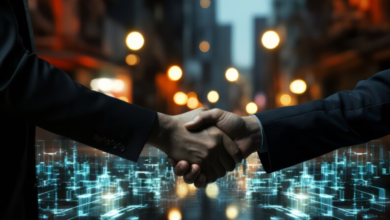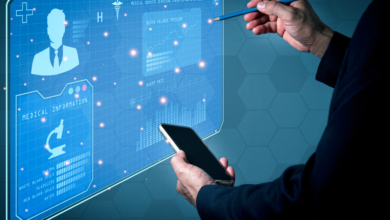Liveness Detection- A Comprehensive Guide to Understanding its Complexity

Conventional biometric procedures are no more authentic as compared to advanced ones. COVID-19 is essential in elevating these features, such as face and iris recognition or age verification. So, firms have shifted from traditional biometrics, resulting in improved productivity. The process doesn’t stop here, with authentication technology making such substantial strides toward ubiquity so it’s essential to keep imposters away who can exploit vulnerabilities.
Developers secure biometric verification through a collection of authentication technologies referred to as liveness detection. Let’s dive deep into the blog to understand how it operates and effectively reduces fraud.
Biometric Verification- A Quick Insight
Biometric verification and authentication is a software or device that can access restrained areas through fingerprint, retinal, and facial scans. Touch IDs and Apple’s Face IDs are major examples of cutting-edge technology at firms. Face recognition allows users to access their devices without entering a password every time, making it more reliable and user-friendly.
For its efficacy and convenience, biometric authentication is famous as other verification technology as it requires security from hackers and imposters. This is the point where liveness detection plays a crucial role.
Preliminary Analysis of Liveness Detection
Like in bank robbery movies, usually, the actors steal the money by using masks, photographs, and even fingers to deceive biometric systems. However, these types of anti-verification attempts are referred to as spoofing or presentation attacks. But, in real time, these methods are less effective than people believe.
That’s why third bodies, known as legal regulatory bodies, provide exact solutions in the form of liveness detection, liveness checking, or anti-spoofing. Let’s move forward to understand what liveness detection is. It’s a range of techniques utilized by verifications, ensuring that their authentic technology has an accurate biometric source. For instance, a thumbprint, actual aye, or human face rather than a false image of one.
Mostly, imposters and criminals are looking for advanced ways to trick authentication technology that makes liveness detection an essential part of securing data and additional assets from them. Hence, face liveness detection has different forms that must advance their systems to update new threats.
Understand the Science Behind Liveness Detection
Authenticators use this cutting-edge technology to hinder presentation attacks as it’s a popular way. These presentation attacks hinder spoofing attacks that are usually made to counterfeit them. Following are the valuable examples of liveness detection:
Passive vs. Active Liveness Detection
Passive and active are two effective forms of liveness detection. Passive liveness is executed in the background, typically without the need for any user facial expressions including natural movements such as blinking to confirm authenticity. However, these advanced checks have proved to be a frictionless method.
On the other hand, active needs some user input involving placing a scanner or thumbprint and a few onscreen directions, such as tilting the user’s head and turning the head from left to right. Hence, UX friendly developers usually opt for passive liveness detection when required.
Complex Challenges and Response
The most remarkable example of active liveness detection is challenge and response, as it verifies that the user typically responds to prompts such as moving the head, blinking, and smiling. The central idea is to combat false representations such as 2D photography and video replays from the user to verify if they are live individuals.
Algorithms and Artificial Intelligence
Many biometric authentications use algorithmic analysis to verify if the given sample matches a pre-registered sample. Also, this analysis is enhanced with machine learning and artificial intelligence incorporation by automatically identifying changes to unrecognized individuals’ faces, including glasses or facial hairs.
Motion and Depth Perception
To combat 2D spoofing and ensure a 3D liveness check to recognize a user’s face, face recognition liveness detection plays a crucial role. This cutting-edge technology uses in-depth perception to gather additional information about facial imprints and their changes that make it difficult for imposters to defeat.
Multi-Modality
The most secure and advanced method requiring different biometric inputs involves retinal, facial, thumbprint, and vocal. However, a professional imposter can bypass biometric authenticators, but it’s a main concern that they can fool multiple systems simultaneously.
Deepfake Technology and Liveness Detection
Let’s talk about deepfakes, as these are typical videos in which the current subject can be digitally transformed with fake persons to spread wrong information or commit fraud. But, some people play a vital role in fooling even advanced biometric systems, maybe for entertainment purposes or to check a liveness test.
Scammers can create multiple fake accounts on different platforms, from online banking to crypto and dating. Not only this, but they can also create a fake ID image with deep presentation attacks. The way to defeat these attacks is liveness detection technology.
Final Verdict
Liveness detection provides firms with a combination of security and user-friendliness that many other methods don’t provide. Customers usually forget passwords, but hands, voice, face, and eyes are all the verification methods. These relaxed clients will forget user pins or lock themselves in any of their crucial accounts. Moreover, trust is a preliminary reason for the global adoption of biometric verification. That’s why liveness detection is a good option for firms and individuals.



